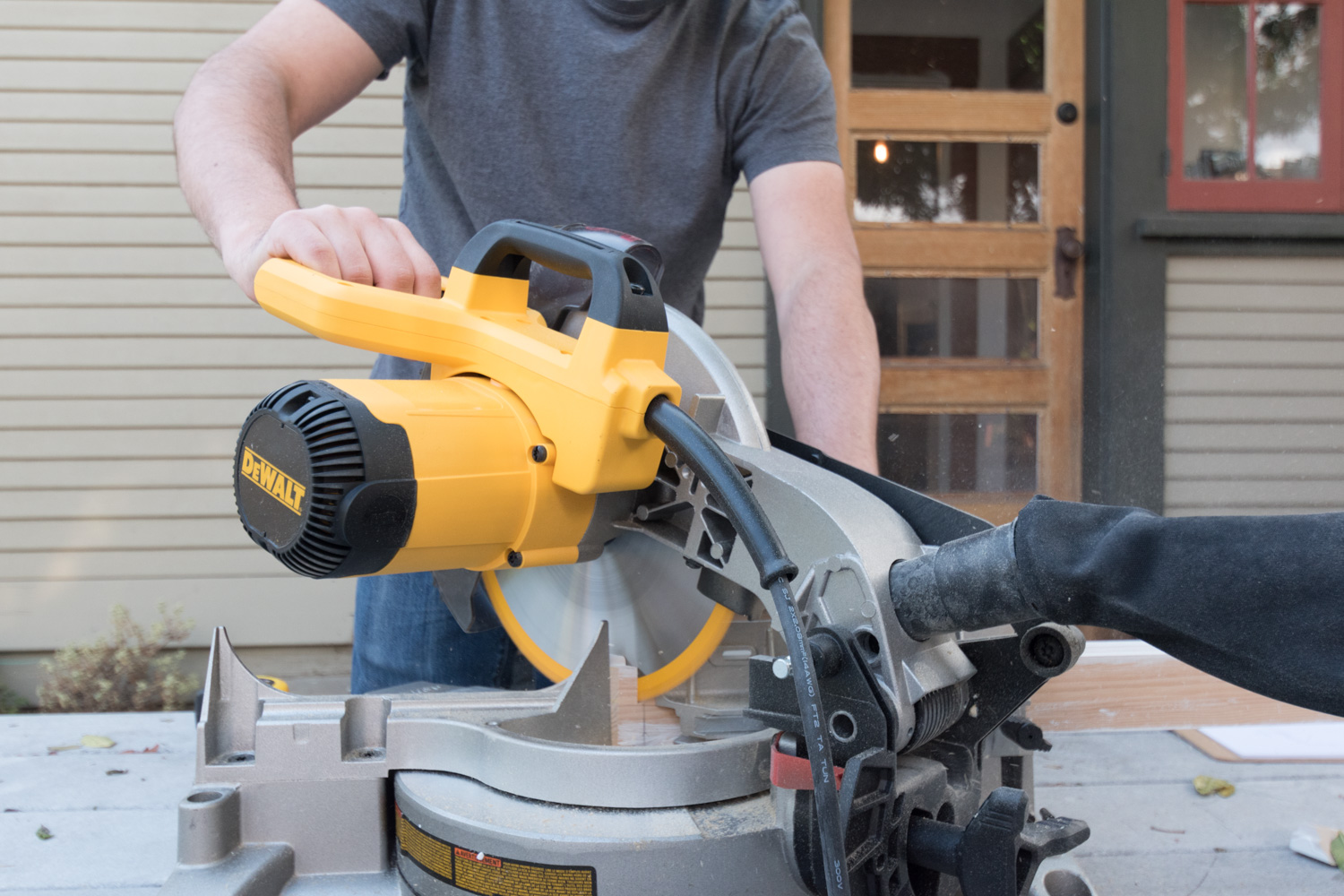One Room Challenge Week 3 - How To Install Picture Rail Molding
/I'm back for week three of the One Room Challenge! If you're just tuning in, I'm mid-way through transforming an unloved spare bedroom into a cozy, moody space. Last week, the room underwent a metamorphosis with radically different paint in a deep green. This past week, we tackled installing the picture rail molding.
If you're unfamiliar with one of my all-time favorite old house features, picture rail molding is a narrow piece of trim that runs the perimeter of the room near the top of the walls. My house's picture rail molding sits atop the door and window frames. Some homes have the molding closer to the ceiling where crown molding would go. If you're in an old house with crown molding that doesn't quite touch the ceiling, then you may just have a picture rail! This lil' piece of wood trim has a notch at the top that allows you to put a small hook over it from which you can hang a frame from a wire. This is oh-so-handy because you never have to put holes in the wall to hang artwork. It saves me from patching holes whenever I want to change pieces - which is a big deal for someone that has major art indecision. It's also great for an old house because you don't risk damaging the plaster (that we all know I'm a fan of) by pounding a nail into the wall. (Side note, hammering plaster walls can really damage them so I always use screws rather than hammering a nail if I ever put anything into the wall). The living and dining room still have their original picture rail molding, but the rest of the house was stripped of their decorative trim at some point over the years. It's my job to put it back!
Enough about why I love this molding, let's get into how to install it.
Supplies:
Studpop for plaster walls or traditional stud finder for drywall
Nail gun and nails
Picture rail hooks (from Rejuvenation, House of Antique Hardware, or vintage)
Wire, rope, chain, or ribbon (of appropriate strength)
The first step is to find molding that fits with your home. The profile we bought was the closest we could find to the existing molding that is still intact in select rooms. If your home never had the molding originally, or you don't know what it looked like, you can research profiles for colonials, victorians, etc. to find what would have likely been in your home. If you have a unique profile and can’t find it at any salvage shops, online retailers, or specialty wood retailers, you can have a blade custom made so wood can be milled to match your existing profile. Finding someone local that does millwork can help you to either make a custom blade to cut your profile or even see if they have one already made.
The brand new molding has such crisp edges, but the existing trim in the house has a softer edge, so I took some sandpaper to each of the planks to give them a less brand-new look. The piece on the left is right out of the package, and the one on the right received a light sanding. Can you spot the mild difference?
After smoothing the edges a touch, I primed each plank with my go-to primer while Ross drafted up the plan of lengths and angles we would need.
We measured each length needed, and noted the direction of the cut. Drawing it out on a floor plan helped us keep track of where each cut would go, then labeling the backside of each piece ensured we didn't get any mixed up.
The trim spans the perimeter of the room so it sits on top of the white doors as well as the green walls. I could have painted it all white to match the trim, but I decided to match the trim color to the surface color it would sit on. So, door and window pieces would be Simply White and the wall trim would be Salamander. Once we had a plan, Ross cut the pieces, while I gave them a couple of coats of their corresponding paint color.
Once we cut all of the pieces, we did a dry fit. Using a level and several hands, we held up multiple pieces to see how each piece would fit against the next and how that would fit with the next and so on and so on. With old walls that aren't totally square, we had to sand down the edges a little, and we had to pull a few pieces from our spare cuttings.
Since the molding would need to hold the weight of heavy frames, mirrors, or whatever I choose to dangle from the trim, it needed to be darn strong. The only way to do this is to nail the trim directly into the studs. Since plaster walls are constructed with wood throughout their backsides (learn more about old walls here), a traditional stud finder (the electronic ones that beep) won't work. THE best way to find studs in plaster walls is with this handy $10 tool. Seriously. It’s the best.
Once you find a stud, measure from that stud a distance that you think your studs may be spaced out. Common distances are 16" or 24." My house has studs 16" apart, so I used blue tape to mark each stud. You could repeat finding each studs with the handy tool, but this is more efficient. This is one of the few occasions when I actually use blue tape on walls.
After we found the studs and dry-fit all of the molding, came my favorite part. We quadruple checked level before I nailed in each piece into the stud. We used this cordless electric nail gun that was such a beauty to have around because it was free of needing a noisy air compressor. Not having the buzzing compressor noise ongoing in the background made the cha-chunk sound of the nail gun so much more satisfying!
It felt great to finally cap the door with trim it always should have had. The doors are grateful to get their hats back.
After all of the trim found its home on the wall, I retraced our steps to fill in all of the nail holes with putty, and cleaned up the seams with caulk. Two walls had long stretches without interruption so they needed more length than the 8' trim piece, so we had to sister them together. My trusty putty, caulking, and another coat of paint erased all of the blemishes.
I'm still finalizing the artwork. Until then, the hooks will rest patiently on the trim.
And there you have it! That, my friends, is how you add oodles of charm with a few pieces of wood. Oh, and I jumped the gun and put the couch in the room already. I'm in love with these colors.
If you're here because of the One Room Challenge, I hope you'll subscribe to the blog to get future blog posts in your email! Be sure to follow along on Instagram, too!
One Room Challenge progress:
Week 1 - the before, the inspiration, and the plan
Week 2 - paint, paint, paint
Week 3 - how to install picture rail molding
Week 4 - sourcing the artwork
Week 5 - refreshing a chair
Week 6 - the reveal!






































